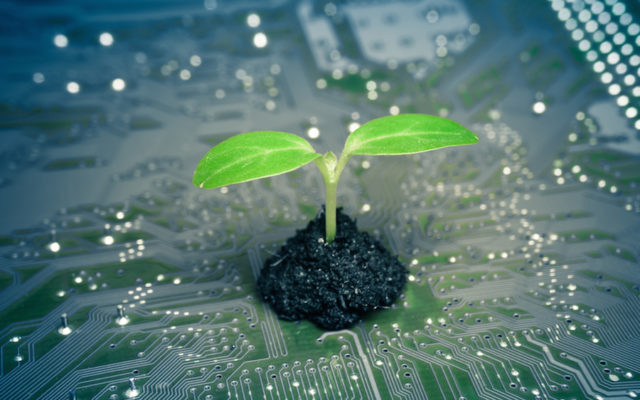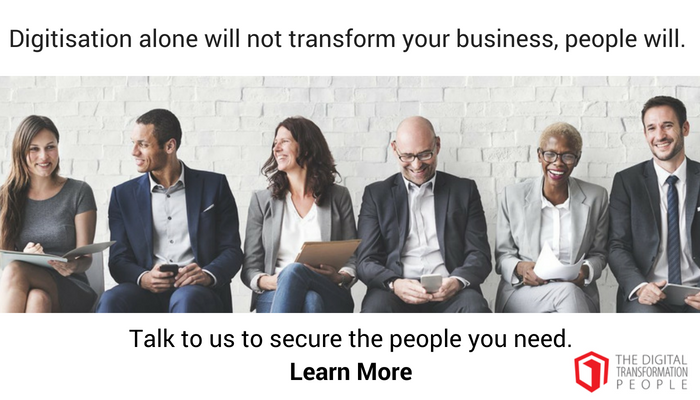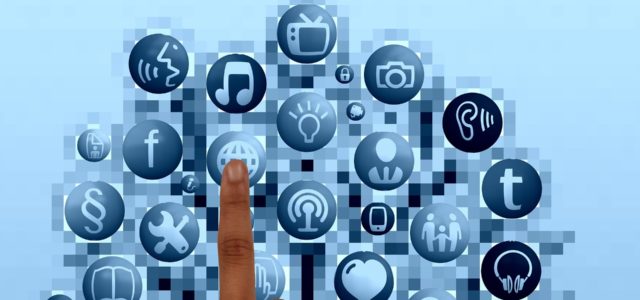The very nature of doing business in 2019 requires companies of all sizes to engage with the world through digital channels and to invest in new technologies.
For example, remaining competitive these days requires companies to gather an ever-larger amount of data from their processes, as well as their customers.
When companies embark on these digital transformations, it’s usually with a specific goal in mind — and one increasingly common goal is the pursuit of sustainability.
What Is Digital Sustainability?
The phrase “digital sustainability” refers to a holistic approach a company can take in achieving better sustainability through wise technology investments. As you can probably imagine, this kind of endeavor can influence every department and process within a company, including its very IT architecture.
If you’ve followed current events at all in recent years, you know the Paris climate agreement and accords like it represent collective milestones toward a cleaner and more stable planet. Targeting sustainability in a company’s IT deployment and its digital processes might sound like an unusual place to begin when pursuing the sweeping change recent climate treaties propose. So it might be surprising to learn that “greening” our companies, our buildings and our cities through digital transformations and technology investments could yield up to a 20 percent drop in carbon emissions between now and 2030.
Moreover, pursuing sustainability through digital transformations nets economic opportunities across the world — and helps smaller companies punch above their weight without blowing up their carbon footprint.
So what does digital sustainability look like, in practice?
IoT Deployments Make Existing Processes More Efficient
For small and medium-sized businesses, it’s becoming increasingly affordable to apply IoT technologies to existing company networks and assets. The Internet of Things isn’t a stand-alone internet: It’s an expressway within your current architecture that channels mission-critical data from one end of your operation to the other.
And as far as sustainability is concerned, the IoT can deliver significant time and cost savings:
- Smart HVAC systems can optimize performance across a building’s physical environmental controls, turn on and off according to occupancy or interface with company or personal schedules.
- Even some older manufacturing equipment can get retrofitted with sensors that enable preventive maintenance by monitoring for unusual temperature and vibration.
The idea that digital technologies are becoming permanently entwined with mechanical systems and stationary infrastructure means companies are increasingly building from the ground up with cyber-physical systems already in mind.
Cost and Waste Savings Through 3D Printing and Computer-Controlled Manufacturing
Hobbyists everywhere are discovering the delights of 3D printing and additive manufacturing. But in business and big industry, the implications are even more exciting. Expect 3D printers to become a vital component in the digital transformation of companies that:
- Manufacture physical goods in small or large batches
- Manufacture replacement parts with demanding tolerances
- Rely on physical equipment and would like to manufacture replacement parts in-house
Projections suggest the benefits of 3D printing on environmental, as well as companywide, sustainability will be significant. Consider that by 2025, the amount of plastic in our oceans may outweigh the collective fish.
That means we have an imperative to produce fewer goods, and to extrude fewer waste products as we do so. The good news is, additive manufacturing effectively localizes the fabrication process, which means up to 5 percent savings in CO2 emissions from freight and material handling processes alone. In shops that employ 3D printers, it’s becoming easier to gather and repurpose cast-off materials that would have gotten discarded as waste in previous generations of assembly technology.
Blockchain, Smart Metering and More Efficient Electricity Use
With a single company facility or even a series of them, the opportunities that come with sustainability-minded transformations can be significant. But things get even more exciting when you scale the concept up across the whole economy, or even within a specific supply chain.
For instance, the residential and commercial electric grids of the near future will be highly distributed and therefore much more resilient and reliable. Using blockchain can create community-based, “virtual” power plants that can monitor supply and demand in real time and more efficiently balance power distribution.
Bringing blockchain, IoT and smart metering to the commercial electric grid could reduce industry’s use of electricity by 6.3 billion megawatt hours, and its CO2 emissions by 1.8 gigatons, by 2030. Of course, starting simple helps too: Merely upgrading your appliances and equipment to Energy Star-rated models can yield significant savings after the initial investment.
These are textbook cases of technology unifying and inspiring collaboration and cooperation. As surely as digital transformations will help companies identify competitive advantages and find opportunities to save money, they will also bring industrywide changes that benefit everybody.
Big Data and Analysis and the “Secondary Market”
There’s another significant opportunity worth mentioning when it comes to digital sustainability in business. It involves the use of big data to gain a better understanding of how consumers interact with their products after the sale, and whether, where, how and why they engage with the “secondary market” for repairs, replacement parts, maintenance or modifications.
Philips and other consumer-level electronics makers are getting involved with this concept. By leveraging data from these secondary markets, companies like these are discovering ways to better work with consumers and companies to extend the lifetimes of their electronic devices. From electric shavers to X-rays, there’s all the reason in the world to postpone tossing these things in the landfill if they still have some usefulness left. Plus, as Philips discovered, making product service, maintenance and repair parts easier to deal with extends the company-customer relationship and opens up new revenue streams.
In all these ways and many more, your company can pursue greater efficiency, lower costs and a longer and more productive relationship with your core audience. And the cost savings don’t just mean better profitability — they also lead to a healthier planet.
Article by channel:
Everything you need to know about Digital Transformation
The best articles, news and events direct to your inbox
Read more articles tagged: Big Data, Blockchain, Featured, Internet of Things









